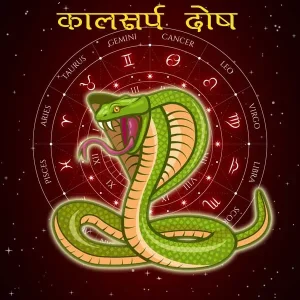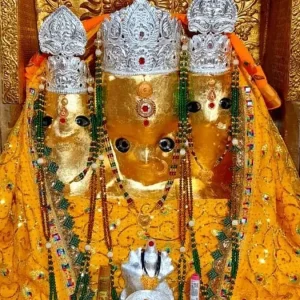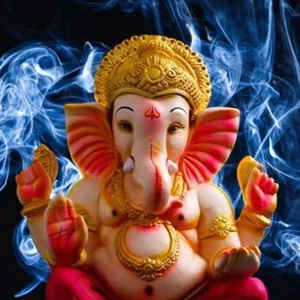“That which does not decay” is the meaning of the Sanskrit word nakshatra. In the lunar planetary house system of Hindu astrology, a Nakshatra is one of the 27 sectors of the great circle that represents the apparent annual journey of the moon. Each of the 27 equal segments of a circle, each encompassing 13 degrees 20 minutes, is used to represent one of the 27 Nakshatras. Ashvini Nakshatra in Mesha Rashi is the first of the 27 Nakshatras in order.
Nakshatra Astrology’s Importance
Birth Nakshtra is a significant factor in our life according to Ancient Vedic Astrology. Your Janma Nakshatra is the nakshatra in which your moon was at the time of your birth. This janma nakshatra has an impact on you as well. Our janam Nakshatra gives insight into our outlook, outward appearance, and future. The thinking style, destiny, instincts, and the subconscious components of personality are all governed by the birth nakshatra.
The purpose of the nakshatra puja
The significance of nakshatra puja and homam has been prescribed by the scriptures in order to counteract the malefic effects of the planets in their major periods (mahadasa) or sub periods (antar dasa) and to achieve benefic results from the same planets. Mantras and offerings are used in the nakshatra’s ritualistic devotion as directed. We experience inner strength and confidence in addition to desired outcomes. We sometimes succeed in achieving them instantly, and occasionally, but not usually, they are slow. But they will undoubtedly happen.
Navagraha Shanti Puja
Every year, a nakshatra shanti puja is conducted on the nakshatra of birth to provide protection and better results all year long. Ayushya homa (for longevity), Mrityunjaya homa (for health and the eradication of chronic illnesses), Navagraha Dosha/graha shanti puja, and Sapta Chiranjeevi Puja/homa are all included in the Nakshatra puja. Chiranjeevi is a euphemism for the immortal. Sapta chiranjeevi refers to Ashwatthama, Bali, Vyasa, Hanumanan, Vibhisana, Parshuramasch, and Kripa. Sadhaks engage in these activities. In order to reap the greatest rewards from nakshatra puja, it is recommended that it be performed at least once a year in the month of your birth on the day your janam nakshatra falls or every month on the day our nakshatra falls.
Gains From Nakshatra Puja
Vamtantra performs Special Nakshatra Puja for each person in order to protect them from acute and chronic illnesses as well as to prevent premature death (akaal mrityu). For those who want to learn tantra and for those who are just starting out, Vamtantra also initiates tantrik nakshatra mantra on an individual’s nakshatra.
The cost of the nakshatra puja
The remittance amount for the Vamtantra Tantric Nakshatra Pooja is INR 11,000 (eleven thousand only), which also includes the Shri Nakshatra Lord Poojanam. Ayushya homam, Mrityunjaya homam, Navagraha Dosha/Graha Shanti Puja, Sapta Chiranjeevi Puja/homa, pranprathista, Shodashopachara Poojanam, Namavali, Vrihad Mantrajapa, Purnahut, Homam, and Visarjan are all included in Nakshatra Shanti Pooja. In addition to these, we also perform Shree janam yantra poojanam and any other particular tantrik puja as needed.
Rashi Rashis Nakshatras and Their Names
- Mesham(Aries)
- Bharani, Krittika, and Ashwini
- Vrishabh(Taurus)
- Mrigasira, Krittika, and Rohini Nakshatras
- Mithuna(Gemini)
- Punarvasu, Ardra, and Mrigasira Nakshatras
- Karka(Cancer)
- Ashlesha, Pushya, and Punarvasu Nakshatras
- Singha(Leo)
- Megha, Uttara, and Poorva Phalga Nakshatras
- Kanya(Virgo)
- Hasta, Chitra, and Uttara Nakshatras
- Tula(Libra)
- Nakshatras of Chitra, Swati, and Vishakha
- Vrischika(Scorpio)
- Jyestha, Anuradha, and Vishakha Nakshatra
- Dhanu(Saggittarius)
- Poorvashadha, Uttarashadha, and Moola Nakshatras
- Makra(Capricorn)
- Sharvana, Dhanishta, and Uttarashadha Nakshatras
- Kumbha(Aquarius)
- Poorvabhadra, Dhanishta, and Shatabhishak nakshatras
- Meena(Pisces)
- Revati, Uttarabhadra, and Poorvabhadra Nakshatras
Birthday or Janam din pooja
Our lives are really important to us on our birthdays. According to the Hindu calendar, this pooja is performed on the date of birth and janam tithe. Tithi is a measure of the Sun-Moon’s attitude.Tithi can be used to predict the future. This is seen by the Moon’s position during birth. The findings based on birth tithi are often supported by other planetary positions and the functioning of planets’ dasa-bhukti. The lunar date is known as Tithi (also spelt Thithi) according to the Hindu calendar in India. Numerous Hindu celebrations and rituals are centred on the Tithi Calendar since it is one of the most significant aspects of the Indian Almanack or Panchang. The rotation of the moon around the Earth is the foundation of a lunar calendar. A tithi is the duration needed for the moon’s longitudinal angle with the sun to rise by 12°. There are 30 tithis in a lunar month, each with a different start and end time. Everyone is advised to bring prosperity into their lives and to go through any obstacles they may face on a daily basis.While throwing extravagant birthday celebrations is the main focus, the traditional way to start this day was with a janam tethi/nakshtra puja, which is regrettably one of the Hindu rituals that is most often disregarded in modern society.
Typically, people perform pujas on this day and offer Homam, Pushpanjali, and Neyvedyam in the temple for the person’s long life and wealth. Until death, a person’s birthday or janam tithe is celebrated with this puja.
Day of Birth/Janam Tithe In order to achieve favourable results from the same planets, the scriptures have given nakshtra/rashi poojas and homas. Yagya/homam is a particular yagya performed on one’s birth day to neutralise the malefic influences of the planets in their major periods (mahadasa) or sub periods (antar dasa). Mantras and offerings are used in the specified ceremonial way to worship the nakshtra/rashi. We experience inner strength and confidence in addition to desired outcomes. We sometimes succeed in achieving them instantly, and occasionally, but not usually, they are slow. But they will undoubtedly happen. Every year, a rashi/nakshatra shanti pooja is conducted on the rashi/nakshatra of birth to provide protection and better results all year long. It consists of Sapta Chiranjeevi Puja/homa, Navagraha Dosha/graha shanti pooja, Ayushya homa (for longevity), Mrityunjaya homa (for good health and to get rid of chronic disorders), and. Chiranjeevi is a euphemism for the immortal. Sapta chiranjeevi refers to Ashwatthama, Bali, Vyasa, Hanumanan, Vibhisana, Parshuramasch, and Kripa. Sadhaks engage in these activities. Given its importance to us, it should be performed at least once a year in the month of your birth on the day that your janam nakshtra or rashi falls, or every month on the day that our nakshtra or rashi falls, in order to reap the greatest benefits.
Vamtantra Tantric Birthday/Janamdin Puja
The price of the Vamtantra Tantric Janam Tithe Pooja is Rs. 11,000 (eleven thousand only). It consists of Shri Tithe Lord Poojanam, Nakshatra Shanti Pooja, Sapta Chiranjeevi Puja/homa, Navagraha Dosha/Graha Shanti Puja, Namavali, Vrihad Mantrajapa, Purnahut, Homam, and Visarjan. In addition to these, we also perform Shree janam yantra poojanam and any other particular tantrik puja as needed.
We need the following information from you for the puja:
Name of the individual for whom the puja must be conducted in full.
- Father’s name.
- born on date
- location of birth
- Age at birth.
- Additional Details
- Phone number.
Click to complete the inquiry form.
*Any poojas and rituals performed on these auspicious days are of utmost importance to obtain blessings and prosperity for every member of the family. To succeed, nine planets are worshipped, and to fully energise each planet, the planet’s greatest power is generated.The purpose of special Tantrik Pujas, which are exclusively conducted at midnight, is to get rid of ego and negativity, which impede both spiritual and material advancement. Tantrik rituals are carried out primarily for world peace, prosperity, health, and happiness. People want protection against evil, foes, and adversity while being blessed with great joy and riches.
Tantra sadhaks do the aforementioned poojas while upholding absolute sanctity and adding tantric/vedic rituals for quick results.
Only your faith, trust, and belief produce the best outcomes.






